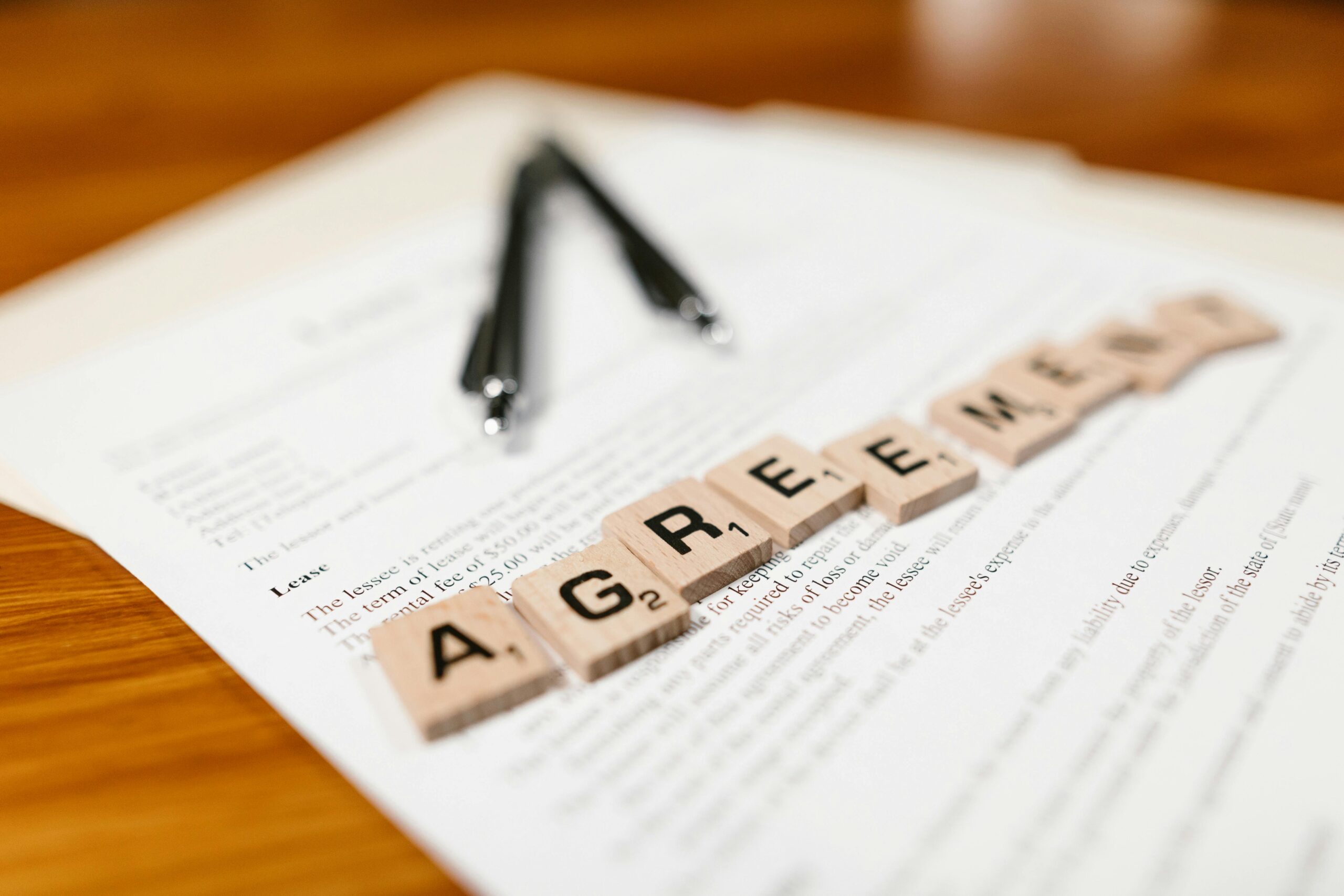How to Draft a Solid Lease Agreement: A Comprehensive Guide

A lease agreement is a legally binding contract between a landlord and a tenant that outlines the terms and conditions of renting a property. Whether you’re a landlord or a tenant, drafting a solid lease agreement is crucial to protecting your rights and ensuring a smooth rental experience. In this article, we’ll walk you through the essential components of a lease agreement and provide tips for creating a comprehensive and enforceable document.
1. Start with the Basics
A. Title and Introduction
Begin the lease agreement with a clear title, such as “Residential Lease Agreement” or “Commercial Lease Agreement,” depending on the type of property. Follow this with an introduction that identifies the parties involved:
- Landlord’s Name and Contact Information : Full legal name and address.
- Tenant’s Name and Contact Information : Full legal name(s) of all tenants who will occupy the property.
- Property Address : The full address of the leased property, including unit number if applicable.
Example: “This Residential Lease Agreement (the ‘Agreement’) is entered into on [Date] by and between [Landlord’s Name], hereinafter referred to as ‘Landlord,’ and [Tenant’s Name], hereinafter referred to as ‘Tenant.'”
2. Define the Lease Term
Specify the duration of the lease, including the start and end dates. There are two common types of lease terms:
- Fixed-Term Lease : Lasts for a specific period (e.g., 6 months or 1 year).
- Month-to-Month Lease : Automatically renews each month until either party gives notice to terminate.
Example: “The term of this lease shall commence on [Start Date] and terminate on [End Date], unless otherwise terminated in accordance with the terms herein.”
3. Outline Rent Details
Clearly state the amount of rent, due date, and acceptable payment methods. Include any late fees or grace periods for late payments.
Key Points to Include:
- Rent Amount : Specify the monthly rent in both numeric and written form (e.g., “$1,200” and “One Thousand Two Hundred Dollars”).
- Due Date : State the day of the month rent is due (e.g., “Rent is due on the 1st day of each month”).
- Payment Methods : Indicate acceptable payment methods (e.g., check, bank transfer, online payment platforms).
- Late Fees : Specify the penalty for late payments (e.g., “$50 late fee if rent is not received within 5 days of the due date”).
- Grace Period : If applicable, include a grace period before late fees apply (e.g., “A 3-day grace period is allowed”).
4. Security Deposit and Other Fees
Detail the security deposit requirements and any additional fees associated with the lease.
Key Points to Include:
- Security Deposit Amount : Specify the amount and how it will be used (e.g., for damages beyond normal wear and tear).
- Refund Policy : Explain when and how the security deposit will be returned after the lease ends.
- Additional Fees : Include any non-refundable fees, such as pet fees, cleaning fees, or application fees.
Example: “Tenant shall pay a security deposit of $1,000 upon signing this Agreement. The security deposit will be refunded within 30 days after the termination of the lease, less any deductions for damages or unpaid rent.”
5. Describe the Property and Its Use
Provide a detailed description of the leased property and specify its intended use.
Key Points to Include:
- Property Description : Include details about the property (e.g., number of bedrooms, bathrooms, amenities).
- Permitted Use : Clearly state whether the property is for residential, commercial, or mixed use.
- Restrictions : Mention any restrictions, such as no subletting, no illegal activities, or limitations on alterations.
Example: “The leased premises consist of a 2-bedroom, 1-bathroom apartment located at [Address]. The property is intended for residential use only and may not be used for any illegal or unauthorized purposes.”
6. Maintenance and Repairs
Outline the responsibilities of both the landlord and tenant regarding maintenance and repairs.
Key Points to Include:
- Tenant Responsibilities : Specify that the tenant is responsible for routine upkeep (e.g., keeping the property clean, reporting issues promptly).
- Landlord Responsibilities : State that the landlord is responsible for major repairs and maintaining habitability.
- Emergency Procedures : Include instructions for handling emergencies (e.g., contact information for urgent repairs).
Example: “Tenant agrees to maintain the property in a clean and sanitary condition and promptly report any necessary repairs to Landlord. Landlord shall be responsible for structural repairs and maintenance of major systems, including plumbing, heating, and electrical.”
7. Rules and Regulations
Include a section detailing the rules tenants must follow while occupying the property.
Common Rules to Include:
- Noise Restrictions : Specify quiet hours (e.g., “Quiet hours are from 10 PM to 7 AM”).
- Pet Policy : State whether pets are allowed and any associated restrictions or fees.
- Guest Policy : Define how long guests can stay and whether prior approval is required.
- Smoking Policy : Indicate whether smoking is allowed inside the property or limited to outdoor areas.
Example: “No smoking is permitted inside the leased premises. Pets are allowed with prior written consent from Landlord and a non-refundable pet fee of $200.”
8. Termination and Renewal Terms
Explain the conditions under which the lease can be terminated or renewed.
Key Points to Include:
- Notice Period : Specify how much notice is required to terminate the lease (e.g., 30 days for month-to-month leases).
- Renewal Options : State whether the lease will automatically renew or require a new agreement.
- Early Termination : Include penalties or conditions for breaking the lease early.
Example: “Either party may terminate this lease by providing 30 days’ written notice prior to the end of the lease term. Early termination by Tenant will result in forfeiture of the security deposit.”
9. Legal Compliance and Governing Law
Ensure the lease complies with local, state, and federal laws. Specify the governing law that applies to the agreement.
Key Points to Include:
- Disclosures : Include any required disclosures (e.g., lead-based paint disclosure for properties built before 1978 in the U.S.).
- Governing Law : State which jurisdiction’s laws govern the agreement.
Example: “This Agreement shall be governed by and construed in accordance with the laws of the State of [State].”
10. Signatures and Notarization
The lease agreement must be signed by both parties to be legally binding. Some jurisdictions may also require notarization.
Key Points to Include:
- Signatures : Provide spaces for the landlord and tenant to sign and date the agreement.
- Witnesses/Notary : If required, include sections for witnesses or a notary public.
Example: “IN WITNESS WHEREOF, the parties hereto have executed this Agreement as of the day and year first above written.
[Landlord’s Name] [Tenant’s Name]”
Tips for Drafting a Solid Lease Agreement
- Use Clear and Concise Language : Avoid jargon or overly complex terms that could confuse either party.
- Be Specific : Vague terms can lead to disputes. Clearly define all terms, conditions, and expectations.
- Consult a Lawyer : If you’re unsure about any legal aspects, seek advice from a real estate attorney to ensure compliance.
- Keep Copies : Both parties should retain a signed copy of the lease agreement for their records.
- Review Regularly : Update the lease agreement periodically to reflect changes in laws or rental policies.



